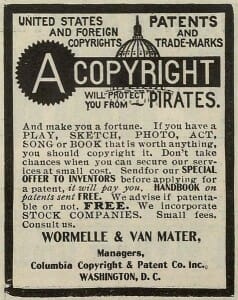A trademark is commonly thought of as a brand or a logo. Think of Nike as a brand and the swoosh as its logo. A trademark can be a word (Nike), a phrase (“Just do it”), a symbol (the swoosh), a design (the swoosh) or a combination of words and designs. The owner of a valid trademark has the right and the ability to prevent others from selling similar goods or services using the trademark or one that is confusingly similar.
Trademark owners generally establish their trademarks in the following three ways:
- By using the mark in connection with a good or service in commerce;
- By registering the mark with the United States Patent and Trademark Office (USPTO); and
- By registering the mark with a state trademark registry.
A registered trademark gives its owner exclusive rights to use the mark in connection with the goods and/or services listed in the registration, and it creates a public record of those rights.
Registering a trademark with the USPTO is the best way to protect one’s mark, but because marijuana is a Schedule I controlled substance under federal law, and because the USPTO will not register a mark if the applicant cannot show lawful use of the mark in commerce, it is difficult to nearly impossible to secure federal registration of a marijuana-related mark. Keep in mind that the Controlled Substances Act makes it unlawful to sell, offer for sale, or use any facility of interstate commerce to transport drug paraphernalia, i.e., “any equipment, product, or material of any kind which is primarily intended or designed for use in manufacturing, compounding, converting, concealing, producing, processing, preparing, injecting, ingesting, inhaling, or otherwise introducing into the human body a controlled substance, possession of which is unlawful under the CSA.” The USPTO has consistently refused to register marijuana-related marks for these reasons.
Done right, however, it is sometimes possible to obtain registration for ancillary products that do not contain or facilitate the use of controlled substances. For example, if you produce marijuana-infused chocolates AND you produce and sell chocolates that contain no marijuana, it may be possible to secure a trademark registration that will pertain to the non-infused chocolates you also sell.
When federal registration is not possible, which is the case for most marijuana-related marks, it typically makes sense to register your trademarks with the Secretary of State of one or more states. The problem with this, however, is that if you register your trademark in Oregon, you probably have no protection in Florida. In order to obtain protection in both Oregon and Florida, you would need to register in both states, which means you will need to run trademark searches in two states and make sure that your brand or logo actually qualifies for a trademark, particularly through use, in both states. For more on why a trademark search is so important, read this and note that making sure you can use a particular trademark involves a lot more than just searching a trademark agency’s webpage or performing a quick Google search. A thorough search is necessary to establish that your brand or logo will not infringe any other trademark, whether registered or not.
It is also possible to gain common law rights in a mark that has actually been used, so long as the mark is not confusingly similar to another mark already in use. However, securing trademark rights this way is limited to the geographic area in which you are actually using the mark. So for example, if you sell your medible product in Washington State only, you almost certainly will not have trademark protection in the State of Florida for your brand or logo, unless your brand or logo qualifies for registration in Florida and you register it there.
Bottom Line: Federal law prohibition of marijuana has greatly complicated the registering of marijuana trademarks, but, if anything, it has increased the value of those marks that are properly secured.
For more on cannabis trademarks, check out the following:
- Cannabis Producers: You Need To Brand Your Cannabis Product
- Build And Protect Your Brand Now While Marijuana Is Still Illegal
- Mirth Provisions Hits it Big with Branding Cold Brew Coffee
- Protect Your Cannabis Brand With A Trademark
- Take Your Marijuana Business Nationwide With Brand Licensing
- Cannabis Branding. Because It Is Important.
























